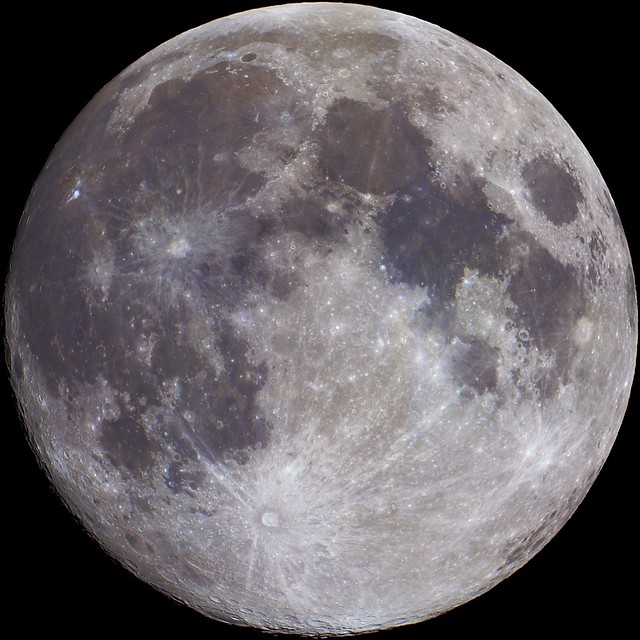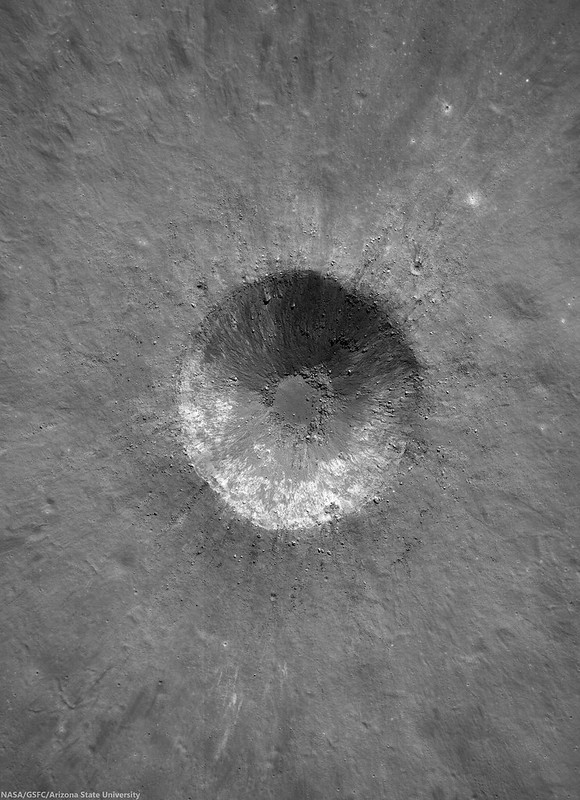 |
| Basalt layering, a slice through the floor of Oceanus Procellarum, is visible along the wall of this section of Rima Marius. LROC Narrow Angle Camera (NAC) Extended Science Mission observation M1103881010R, LRO orbit 14991, October 3, 2012; 21.88° angle of incidence over a 1.3 km-wide field of view, resolution 0.99 meters from 121.1 km [NASA/GSFC/Arizona State University]. |
Sarah Braden
LROC News System
Mare basalt layering is visible in the walls of a number of impact craters such as Caroline Herschel Crater and Pytheas Crater. Layers were seen in the wall of Hadley Rille near the Apollo 15 landing site and Today's Featured Image shows a few layers of mare basalt along the top edge of the wall of Rima Marius.
Look closely at the Featured Image to see the individual layers.
Rima Marius is about 280 km long, sinuously slicing through large extents of mare basalt. The are seen in the Featured Image is centered at 14.986°N, 311.565°E.
Rilles form when large volumes of low viscosity magma erupt and flow turbulently. The erosive force of the turbulent flow carves a channel into the lunar surface and then drains away, leaving behind an empty groove in the Moon. Studying the thickness of mare basalt layers using areas like the Feature Image help scientists model the viscosity and eruption volume of single eruption events.
Explore the entire LROC NAC for more Rima Marius, HERE.
Related Images:
Dark surface materials surrounding Rima Marius
Discontinuous rilles
Hadley Rille and the Mountains of the Moon
Layers near Apollo 15 landing site
LROC News System
Mare basalt layering is visible in the walls of a number of impact craters such as Caroline Herschel Crater and Pytheas Crater. Layers were seen in the wall of Hadley Rille near the Apollo 15 landing site and Today's Featured Image shows a few layers of mare basalt along the top edge of the wall of Rima Marius.
Look closely at the Featured Image to see the individual layers.
Rima Marius is about 280 km long, sinuously slicing through large extents of mare basalt. The are seen in the Featured Image is centered at 14.986°N, 311.565°E.
 |
| LROC Wide Angle Camera context view of the southern leg of winding Rima Marius. The arrow marks the location of the field of view shown at high resolution in the LROC Featured Image. LROC WAC M166161047CE (604 nm) spacecraft orbit 9621, July 2, 2011, 63.53° angle of incidence, 58.9 meters resolution from 42.35 km [NASA/GSFC/Arizona State University]. |
 |
| The 280 km length of Rima Marius and the LROC Featured Image field of view (arrow) as seen from Earth is more easily seen through telescopes from Earth with the lengthening shadows of local late afternoon illumination, a few days after a Full Moon. In this crop, from a high-resolution lunar mosaic captured by Yuri Goryachko and colleagues at Astronominsk in Belarus, September 25, 2008, shows vast context for Rima Marius within central Oceanus Procellarum, from the Aristarchus Plateau in the North to the Marius Hills, Marius crater and Reiner Gamma swirl albedo to the south [Astronominsk]. |
Related Images:
Dark surface materials surrounding Rima Marius
Discontinuous rilles
Hadley Rille and the Mountains of the Moon
Layers near Apollo 15 landing site














![A closer look, under a higher sun, allows a detailed view of the bright ejecta of the crater of interest. Full 3 km-width field of view from LROC NAC M138504456L, orbit 5545, September 7, 2010; 29.65° angle of incidence, resolution 66 cm from 63.83 km [NASA/GSFC/Arizona State University].](http://farm8.staticflickr.com/7400/9096556228_d46d39d9a4_c.jpg)



























